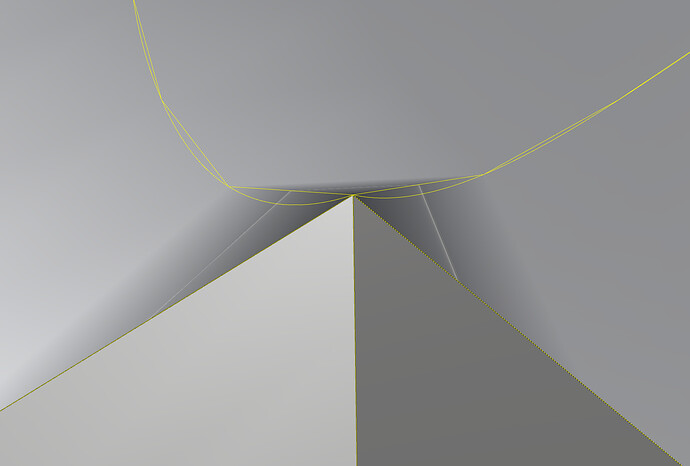I am still somewhat new to SubD. I am working up a car body in SubD, whilst doing CFD in OpenFoam. I would like to keep the body in SubD for as long as I can, before chopping it to pieces, because I don’t have the actual frame and interior worked out to the actual n’th.
This approximation of a NACA duct submerged inlet was drawn from scaled official NACA drawings, so, I want to keep its shape pretty close before beveling it, also for as long as I can in the process, because there’s no way to unbevel it, I think. I think that adding some bevels might alleviate this problem, but I want to keep the accuracy as best as I can–for as long as I can.
The corners, my corners are crap. I’ve gotten them better by taking the tension out of them, but the very corners themselves, are indeed crap. After a few hours, I have the center line fairly good.
I know I have some triangles in this, and I also know quads would be better, but if anyone has an idea where my next split should be, I would be appreciate the advice, but I would likely try it. (Thanks)
I have tried flattening out the vertical segment and widening it a bit so that the creases don’t do Z as well as X and Y changes all at once, but that has not worked out.














